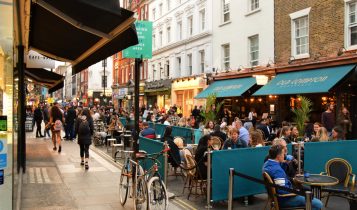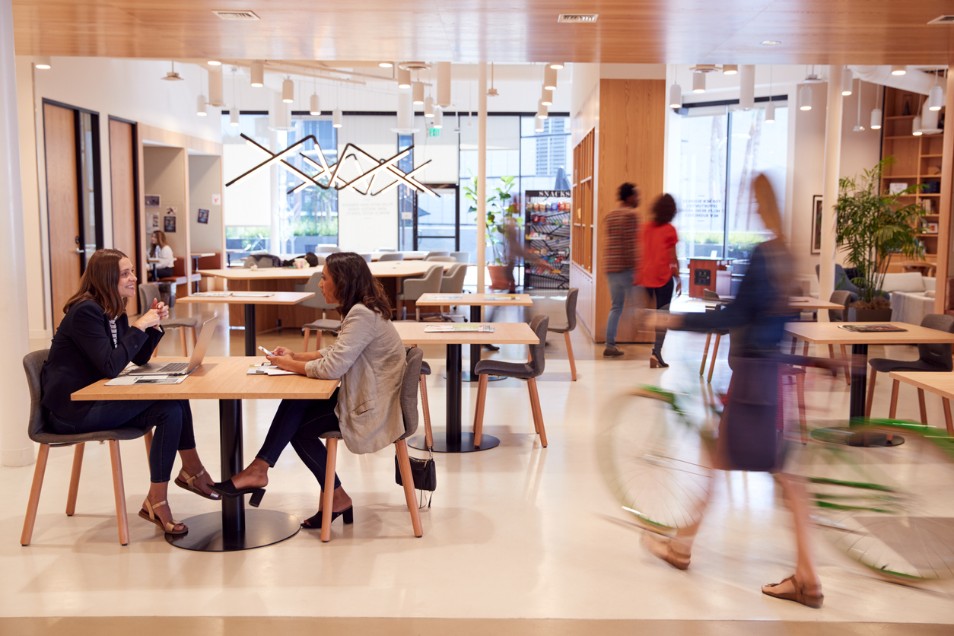Mr Liviu Tudor tells CEO Today that the recovery of city centres and the economy relies on a return to the office but warns that businesses must prioritise their employees’ safety and well-being in doing so.
During the height of the first COVID-19 global lockdown in 2020, President of the European Property Federation and Founder of Genesis Property, Mr. Liviu Tudor, took action by launching the IMMUNE Building StandardTM as a means of providing building operators with the tools and knowledge to reintegrate workforces back to the office, whilst placing their comfortability and well-being at the fore of the agenda. Inspired by technologies and procedures successfully applied in hospitals and “clean rooms”, the Standard convenes an assessment of 130+ recommended measures for buildings to implement, including architectural engineering, technology, design and more, followed by a third-party assessment to provide the property with an IMMUNE label (3*, 4*, 5*).
When news of the pandemic first arose, it soon became clear that life as we knew it would change. Over one year on, that early interpretation has thus far proven to be accurate, with the virus radically changing the way we live, work and interact. Except for hospitals, clinics and ‘clean rooms’ dedicated to scientific research, no commercial building was prepared to face a pandemic challenge of the COVID-19 magnitude. The result has been a 16-month, and counting, period of mass work from home adaptation around the world. Today, as reports emerge in the media on an almost daily basis regarding the return, or no return, to the office status quo, it’s important to assess the impact on the economy and workforce productivity if building managers are not able assure their tenants of a safe working environment capable to be resilient against current and future pandemic threats.
The ongoing absence of workforces from buildings brings with it a number of considerable issues to both work output and collateral damages to the economy. The general consensus amongst corporate leaders is that, though initially necessary against the backdrop of the global COVID-19 spikes in 2020 and 2021, returning to the office is favourable for connectivity, creativity and productivity amongst employees. Remote working has also impacted the entry level workers in less established positions, the likes of whom will form the next generation of corporate teams in years to come. Development and integration of new team members is considerably more challenging without the benefit of face-to-face training, team rapport building and close-by mentorship. In short, the next generation of budding employees risk becoming a long-term product of the COVID-19 crisis – lacking the same education and experience afforded pre-pandemic.
Peeling back the layers, you then see the collateral impact to city economies – not least the hospitality industry which thrives off a buzzing city work culture. Hybrid working entails less commuting and significantly less consumers in urban cores. It is estimated that working from home will slash spending in city restaurants, movie theatres, barbershops and other retailers by up to 10% when compared to pre-pandemic times. Public transit authorities can also expect lasting craters in revenue collection.

So, when the recovery of the global economy and city centres can be bolstered by the return to the office, as well as the future of business/employee growth, what’s to stop businesses simply recalling all staff to properties once the final lockdown restrictions drop in the UK for the so called ‘terminus day’? The answer lies in valuing and understanding the concerns of your teams on the back of a huge global event of this nature.
Despite the vaccination drive proving to be vastly successful in the UK to date, there are still understandably concerns amongst the public about the threats of contracting COVID-19 when reintegrating into busy offices. These concerns must remain paramount to an employer’s priority, seeing as the physical and mental well-being of employees is the nucleus to a successful business. As an employer, maintaining a close handle on the wellness and comfortability of your team is what breeds an atmosphere for productivity and creativity. So, the answer is not to force workforces back to the office without having an understanding for their fears and anxieties, but instead doing all that we can to implement measures which ease said worries.
The IMMUNE Building StandardTM is based on a research and development project led by experts in medical fields, architecture and engineering and outlines a set of measures, technical solutions and facility management practices to help building managers to monitor, communicate and adjust their indoor premises. Buildings are then scored by an assessor for their level of compliance against the Standard and given one of three labels; Strong (3*), Powerful (4*) and Resilient (5) to certify how built environments can withstand present and future health challenges and minimise the impact of a pandemic such as COVID-19 and other bacteriological or toxicological threats.
Examples of measures within the Standard includes having an IMMUNE Steward on site, an IMMUNE warehouse, air quality sensors, air treatment surface disinfection technology, air purification and UV lighting disinfection in elevators, digital twin displays, self-cleaning and hands free door opening systems, self-cleaning elevator buttons and more. Much of the Standard focuses on making regular touchpoints more resilient against the threat of pathogen transmission. We believe that having this kind of infrastructure is not just a COVID-19 measure but a measure for the future which will ensure buildings around the world are much better equipped to deal with these kinds of threats.
Building H3 in the West Gate Business District, Romania, fully occupied by Ericsson, earned the IMMUNETM - Resilient label, becoming the world’s first building to achieve the highest certification level of the IMMUNE Building StandardTM. There has been an uptake in the IMMUNETM criteria across the world, including Europe, the UK, Asia and America to date.
Since people are spending up to 90% of their time indoors, the need to redesign and reengineer the built environments, mainly responsible for our health, becomes more and more articulated. Just as we take care of our own immune system and constantly seek to boost it, there is a need for solutions to improve the immunity of the buildings in which we spend most of our time in and to prepare them for the new normality. This is how the IMMUNE™ concept was created, with the mission to boost the immunity of office buildings and design the healthy environment in which we will work in the future. It is with this that we believe the physical connectivity between employees and their place of work can be replenished – and as such the economies of certain sectors and areas can begin to bounce back.











